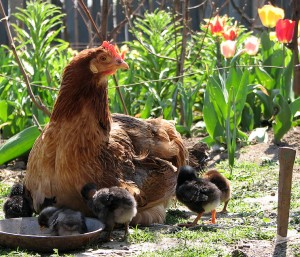 North America and many other places have been deluged with weather emergencies. It has been happening since there was life on earth but now with cell phone cameras, TV and Internet we get close up views of what is going on. Some upset weather is worse than others.
North America and many other places have been deluged with weather emergencies. It has been happening since there was life on earth but now with cell phone cameras, TV and Internet we get close up views of what is going on. Some upset weather is worse than others.
Where we live we can predict with certainty the power will go off in the winter and some times spring. With North West winds off the Atlantic and salt spray from the ocean we can be plunged into darkness easily. A few years ago we had a lot of snow and fierce winds. The power was off for four days and other places much longer. By preparing ahead your life doesn’t have to become a disaster when the weather turns bad.
Here is a list of things you can do to prepare for this type of emergency ahead of time.
Keep things in one place so you can find them in a emergency.
Have a supply of unscented candles and wide mouthed candle holders that won’t tip over and matches.
Battery run lamps and extra batteries are good or better is hand cranked flash lights.
A battery radio and a hand crank radio
To cook if you don’t have a wood stove a two burner propane cook stove will do. A fondue that uses a little candle is another alternative that can heat water or soup.
If you use a propane or kerosene heater becarful to have an uncombustible surface to set them on and proper ventilation.
Have sleeping  bags or warm blankets for each family member.
If you have a wood stove keep a supply of wood ahead and chimneys clean and ready to use.
Small generators are also available and battery packs that can be re-charged by a car battery.
 Store five gallon containers of water for washing and flushing the toilet. Store other water for drinking and replace it often to keep it fresh.
Store five gallon containers of water for washing and flushing the toilet. Store other water for drinking and replace it often to keep it fresh.
Have an ice chest and use ice packs frozen in the freezer. When the power goes off only open the freezer long enough to get the ice packs. Then close the freezer and wrap blankets around it to keep it frozen longer.
Have a non-electric can opener and a supply of canned food your family likes. Also store skim milk powder, dried fruit, crackers kept in air tight cannisters, canned beans and soup and granola bars. Replenish the stored food every few months to keep it fresh.
Keep some cash on hand. Banks close and debit, bank machines and credit card machines don’t work when the power is off.
For extreme emergencies if you live in areas prone to tornadoes, hurricanes, floods and earth quakes you will need a second emergency plan.
First have a family plan and know  where everyone should meet or contact other family menbers in a weather emergency.
If an order to evacuate is given don’t procrastinate or refuse to go. We have had one hurricane in Nova Scotia a few winters ago and no one took it seriously. That won’t happen again and there was alot of damage that could have been avoided. Stupidity is not using common sense.
Tornadoes and hurricanes are usually predicted ahead of time and there is time to take shelter or leave. Some tornadoes come up quickly but if you have an emergency plan you will survive easier than if you don’t.
Here are a list of suggestions on how to prepare.
Have a knapsack for each family member. In it put extra socks, a change of under wear, change of clothes, sweater, knit hat and gloves and nylon rain poncho. Keep rubber rain boots handy so you don’t have to search for them if needed quickly
Include a small flash light, batteries , small games or puzzels to occupy children.
Put in dried fruit, granola bars, nuts, chocolate or any non perishable food that does not to be cooked and tea bags.
Have a camping plate, bowl, knife, fork and spoon and water bottle.
Put in a foil emergency blanket that folds small
A face cloth, hand towel and bar soap, tooth brush and baking soda or tooth paste
You can keep a nylon ground cover and nylon pup tent with strings that tie to a poles or trees in the knap sack. These take up very little room. I keep a half dozen wooden clothes pins with mine as they come in handy for fastening many things.
 For adults have a second knap sack which  includes  fire starter sticks , water proof matches , a small fry pan, turner and fork, a small metal pot for water and cooking and a metal coffee pot. Don’t forget dog or cat food if you have a pet.
For adults have a second knap sack which  includes  fire starter sticks , water proof matches , a small fry pan, turner and fork, a small metal pot for water and cooking and a metal coffee pot. Don’t forget dog or cat food if you have a pet.
A small grate like from a hibatchi grill set over rocks makes a good cooking surface.
Have a small hand strainer to strain water if needed
Include a hatchet and camping knife.
Have photo copies of important papers such as deeds and birth cirtificates and insurnce cards and perscriptions put in a plastic bag in the bottom of the knapsack for safe keeping. . Don’t forget your passport and drivers license when you leave the house. The originals of photo copies should be in a safty deposit box at a bank.
Keep cash on hand because banks will close and machines don’t always work in emergencies.
Keep medications handy so you won’t forget them. Take a water bottle for each family member.
Pack a first aide kit with essentials in it. Include sun screen and bug repellent.
Keep your emergency bag packed and store near your sleeping bags.
If evacuating by auto and have a tent take it with you . Store it neer your emergency pack.
If you are staying in a storm shelter or basement during a storm many of the same things will help you so take your knapsack with you.
This list may seem like a lot but really packs small. I travel by bicycle alot and and take most of these things with me to camp with. The bike has saddle bags and a front carrier. I also take a four and a half foot tent and self inflating sleeping mat tied on top secured with a bungy cord. Hiking I have used the same knap sack and a two wheeled wire shopping cart to haul the tent and sleeping mat. The point is if I can carry what is needed in an emergency or to camp with out a vehicle anyone with a vehicle shouldn’t have a problem if prepared ahead of time.
Hopfully your emergency measures won’t have to be used but if needed they will be ready for you and your family to evacuate or ride out a storm at home. Keep things together and easy to get to. Then relax and live your normal life knowing you are prepared as much a humanly possible for what ever nature brings your way.






























Another great emergency kit addition are MREs. I usually purchase these online for hunting trips since we often “camp” out of the truck and try to pack as light as possible. The taste has come a long ways in the last couple of decades and they travel/keep *really well*.
From wikipedia [http://en.wikipedia.org/wiki/MRE]:
“Packaging requirements are strict. MREs must be able to withstand parachute drops from 380 m (1,250 ft), and non-parachute drops of 30 m (100 ft). The packaging is required to maintain a minimum shelf life of three and a half years at 27 °C (80 °F), nine months at 38 °C (100 °F), and short durations from -51 °C (-60 °F) to 49 °C (120 °F) must be sustainable.”
Many MREs now include a frameless ration heater that will heat the pouch contents providing a hot meal. This fairly recent innovation is handy when working in a cramped space (pick-up cab) or anyplace where using an open flame is not a good idea.
They’ll never be on par with Momma’s pot roast and potatoes, but when it comes time to get the job done!
“flameless ration heater”
Sigh! Not enough coffee!
We have a 2500sqft home with stairs built in the center or the house. We have a wood stove in our LR and an Oil Furnace downstairs we have a Electric HEat pump up stairs. Now here the problem the price of Oil is outragous here and we want to use out Wood Stove as much as possible this year to heat with. How do we keep our pipes under the house from freezing? The heat from the wood stove rises up stairs but how can we heat with our using the oil this year. With a modern house and plumbing how do we revert back? This is what I want to do??? I am so tired ob being stuck in society as it is so I want to learn from the Amish. How can I make this work with indore plumbing?
Hi jreyeas; I assume the oil furnace is in your basement? Is your water from a well or piped in from a town or city resivour?
Our house has plumbing in the basement. Our basement is rock wall because the house is so old. Bill first plugged all the obvious holes in the walls with cement. Then he wrapped the water pipes with insulation made for that purpose. In extremely cold winter he keeps a light baulb turned on over our water pump. Our water is from a well and the pipe runs from the house underground to the well.
Our wood heater is in the living room and wood cooking stove is in the kitchen so heat from those stoves don’t reach the water pipes. By insulating and leaving a light baulb on over the pump our pipes don’t freeze. We also eliminated the half bath upstairs and redid the plumbing so there are less pipes. We only have a bathroom on the main floor now. With less pipes there is less to worry about freezing.
I am sorry that I accidently hit the submit button before I had finished writing! So to answer the rest of your question about how to revert back a modern house? My question is ; how far back do you want to go?
If eliminating the oil furnace is all you are concerned with ; then insulating the pipes and adding a light may solve that problem. If you are considering getting rid of electricity or gas and plumbing you might want to rethink the thought!
Living with out electricity or gas and plumbing is fine but it is hard especially when it comes to cooking and preserving food and washing clothes. Who wants to use an outhouse in the middle of the winter either! I have been there and done that and the pioneer life is not easy. The best life is somewhere in the middle where you use the modern things with in limits and frugally while preserving the old time way of doing things too After all you may want to reach old age in good shape so you can enjoy life without being wore out from hard physical work! I hope things work out for you.